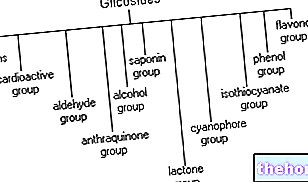LYOPHILIZATION: consists in the sublimation of the water from the drug; the drug is frozen in freeze dryers which, under particular conditions of pressure and temperature (taking into account the state diagram of the water), cause it to move away by sublimation (direct passage from the solid state to the gaseous state, without passing through the state liquid). It is a method that guarantees the removal of water from the drug, reaching percentages even lower than 5% very quickly.
Freeze-drying is applied to sources that are particularly rich in water, which for this reason risk quickly undergoing post-harvest degradation processes. This technique is applied precisely to avoid such alterations and allow a good shelf life of the drug; it is a very expensive but also quite popular method.
The modern freeze-drying and drying processes (small closed room and dynamic dryer) guarantee the best shelf life of the drug over time. The small closed room is the best compromise to obtain a temporal blockage of the hydrolytic enzymes and prevent the non-reproduction of bacteria, molds and fungi; moreover, the temperature favors the disinfection of the drug itself.
In addition to those seen so far, there are other methods to promote the duration of a drug; the most used are STABILIZATION and STORAGE (addition of preservatives). Both determine an unlimited "inhibition of" enzymatic activity over time, because they alter the structures and functions of the enzymes, causing them to denature.
The stabilization process irreversibly denatures the enzymes, therefore the drug undergoes alteration only if attacked by external agents, while it cannot undergo alterations from endogenous activity. Stabilization, in fact, is a drastic process which is achieved through the use of an autoclave and suitable solvents; the most suitable drug to be stabilized is that which is very easily and rapidly subjected to degradation by endogenous enzymatic activity. The stabilization process must therefore be carried out immediately after the source is harvested.
The autoclave is a "pressure cooker" where temperature and pressure (stable at certain values) play a fundamental role in the stabilization process; the solvent used can be alcohol or acetone. The fresh drug is placed inside a loaded basket. of solvent, inside the autoclave. The temperature and pressure are then brought to constant levels: 120 ° C for the temperature, while the pressure increases at intervals of 0.5 units until reaching values two or three times higher than that When the pressure has reached 0.5 units higher than atmospheric pressure, and the temperature 105-110 ° C, the drug is in the conditions suitable for actual stabilization, which is continued for a time ranging from 5 to 15 minutes. The correct execution of the stabilization process requires that the operating conditions limit as much as possible the escape of the vacuolar juice from the drug; it is correctly carried out when the step d i such juice in the solution is practically insignificant.
The autoclave stabilization process leads to the complete and total denaturation of proteins and enzymes (thanks to the high temperatures and pressures reached).Thus, these protein molecules permanently lose their functional characteristics; that is why stabilization is an irreversible process. The stabilized drug will only be altered if exposed to unfavorable exogenous factors.
Once stabilized, the drug is not ready for use, because it is still immersed in the solvent; this liquid will be removed by placing it in an oven (80 ° C). After a certain period at these temperatures the drug is dry, because together the solvent is also removed from the water. Ultimately, the drug is reduced to powder, so that it is ready for health use: stabilized and pulverized.
If in the autoclave, inside the solvent, the quantity of active ingredients is negligible, then the stabilization has occurred correctly. drug dispersed therein (the solvent is removed by evaporation and the active ingredients thus obtained are incorporated into the dried and pulverized drug).
To remember: stabilization is a process adopted to improve the conservation of those drugs that undergo rapid endogenous post-harvest degradation; however, the stability of the active principles must always be considered. For example, if the drug is highly degradable and the active ingredients are thermolabile, it is evident that it cannot be stabilized, since the temperatures reached are too high to maintain its quality.
Other articles on "Freeze-drying and stabilization of a drug"
- Tincture, mother tincture and macerate
- Pharmacognosy
- Drug storage and expiration date




























